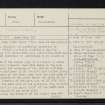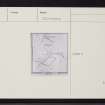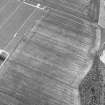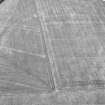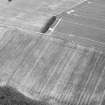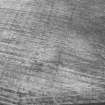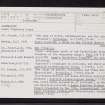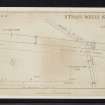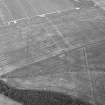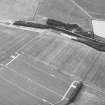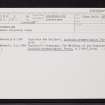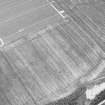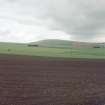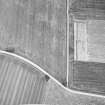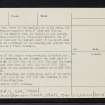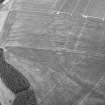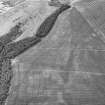Pricing Change
New pricing for orders of material from this site will come into place shortly. Charges for supply of digital images, digitisation on demand, prints and licensing will be altered.
Upcoming Maintenance
Please be advised that this website will undergo scheduled maintenance on the following dates:
Thursday, 9 January: 11:00 AM - 3:00 PM
Thursday, 23 January: 11:00 AM - 3:00 PM
Thursday, 30 January: 11:00 AM - 3:00 PM
During these times, some functionality such as image purchasing may be temporarily unavailable. We apologise for any inconvenience this may cause.
Glenmailen
Temporary Camp(S) (Roman)
Site Name Glenmailen
Classification Temporary Camp(S) (Roman)
Alternative Name(s) Ythan Wells
Canmore ID 18225
Site Number NJ63NE 2
NGR NJ 655 381
Datum OSGB36 - NGR
Permalink http://canmore.org.uk/site/18225
- Council Aberdeenshire
- Parish Auchterless
- Former Region Grampian
- Former District Banff And Buchan
- Former County Aberdeenshire
NJ63NE 2.00 655 381
(Name NJ 655 381) Roman Camp (R)
OS 6" map, (1959)
NJ63NE 2.01 centred NJ 6551 3818 Roman Temporary Camp
NJ63NE 2.02 centred NJ 6603 3847 Roman Temporary Camp
A 120 acre camp known since 1785-6 when it was planned by Col Alex Shand. It was partially excavated by MacDonald (1916) in 1913. It partially overlies a smaller Agricolan camp with Stracathro-type claviculae, which was identified and confirmed by sectioning by St Joseph in 1968.
The outline of the larger camp as portrayed by Shand and Roy is more irregular than that shown by the OS and Crawford; and the accuracy of the earlier outlines appears to be confirmed by St Joseph's AP's.
The north side of the large camp cuts the west side of the smaller exactly at the point where the ditch of the latter turns outwards at the gate, ie at NJ 6584 3846. The whole of the west side of the Agricolan camp is known measuring 1,050', as are about 1,090' of the north side and a short length of the south side.
In construction the defences of the larger camp are are stronger than those of the smaller,the ditch being 11 1/4' wide and 4' deep,as compared with 4' wide and 2'deep.
No trace of the smaller camp is visible on the ground, but of the larger, Crawford in 1943, could identify the 5' high NE corner bank and the western half of the south side which survived as portrayed on the OS map, the eastern half being continued as a field boundary.
Information from plan by Col A Shand 1785-6; G Macdonald 1916; Information from OS 6" map, annotated by O G S Crawford 11 May 1943; O G S Crawford 1949; J K St Joseph 1951; J K St Joseph 1958; J K St Joseph 1969; J K St Joseph 1970.
The rampart of the larger camp,averaging 3.5m wide and 0.7m high,still survives in two places - the west half of the south side at NJ 6496 3801 to NJ 6524 3790, and the north half of the east side from NJ 6604 3840 to NJ 6587 3820. There is no trace of the earthwork published at NJ 6548 3832 on the OS 25" map.
A soil mark indicating the ditch along part of the north side from NJ 6561 3859 to NJ 6581 3848 was visible at the time of field investigation.
Revised at 1/2500.
Visited by OS (ISS), 11 January 1973.
Aerial Photographic Transcription (1 July 1994 - 14 September 1994)
An aerial transcription was produced from oblique aerial photographs. Information from Historic Environment Scotland (BM) 31 March 2017.
Publication Account (17 December 2011)
Two camps are now known at Ythan Wells, close to the source of the River Y than in Strathbogie. The camps, which overlap one another, lie on a fairly level plateau with good views in all directions, and are approximately midway between the camps of Logie Durno and Burnfield.
Camp I was recorded by Captain (later Colonel) Shand in 1785, and planned by T McRonald in 1789 (Newte 1791: 301–2; Stuart 1868: 28); his plan was published by Roy (1793: Pl. LI; also see Crawford 1949: Pl. XX). It is perhaps surprising that, as it was the most northerly camp known for a considerable time (Auchinhove was discovered in 1949, and also see the possible camp at Bellie), it did not become a favoured location of the battle of Mons Graupius, although Haverfield did state that ‘the site agrees ill with the description of the battle of Mons Graupius’ (1914: 9). Macdonald (1916) provides a useful summary of the historical sources for the camp.
The camp lies in arable and improved pasture fields, with parts of its south-west and south-east sides still preserved in field boundaries. Here, the rampart measures some 3.7m in width and up to 0.7m in height. Parts of the north-west, north-east and south-east sides are visible as cropmarks on air photographs. Crawford reported that the whole of the north-west side could be traced on the ground as a stony mound (1949: 120), but little trace of this side survives today beyond a very slight terrace at one point. The camp measures about 805m from north-east to south west by 590m, enclosing an area of some 45.3ha (112 acres). Two of the presumed six tituli are clearly visible as cropmarks: in the northern part of the north-west side and in the centre of the northeast side. The ditches change alignment slightly at both points. Haverfield and Macdonald carried out excavations at the site in 1913, and recorded that the ditch was at least 2.7m wide and at least 1.2m deep on the south-west side, noting that the accompanying rampart must have been some 6m wide, constructed of loose earth and stones, on a bed of clay some 7cm thick. They also recorded that the rampart was still up to 2.3m high in places (on the outside) and probably 5.5m wide. Elsewhere the maximum width of the rampart was 3.6m. They also sectioned one of the tituli on the north-west side and opened up exploratory trenches in the interior (Macdonald 1916: 357–8).
Further excavations were conducted on the camp in 1968 by St Joseph, largely to determine the relationship between it and a second, overlapping camp, discovered from the air that year to the east (1969: 112–13). The ditch of camp I on the north-east side was recorded as V-shaped, measuring about 3.4m in width and almost 1.2m in depth (St Joseph 1970a: 175).
Parts of all four sides of camp II are recorded as cropmarks and the camp measures about 412m from WNW to ESE by about 323m transversely, enclosing some 13.5ha (33 acres). Stracathro-type gates are visible in the north and west sides.
The 1968 excavations established that camp II was earlier than its larger neighbour. The dimensions of the ditch of camp II were very small, measuring some 1.2m in width and barely 0.6m in depth (St Joseph 1970a: 175–7). St Joseph excavated a further fourteen trenches to establish the north ditch of the camp in 1971 (RCAHMS St Joseph Collection: Notebook 6).
R H Jones.

























